Every year in Minnesota, thousands of people’s lives are dramatically altered due to collisions with commercial vehicles.
According to the Minnesota Department of Public Safety, in 2021 alone, there were 4,120 reported commercial vehicle accidents involving delivery trucks, tractor-trailers, and similar heavy commercial vehicles. Of those, 72 fatalities resulted, and 1,248 people were injured, with the vast majority of deaths and injuries sustained by those in the passenger vehicles.
In the United States, the National Safety Council reported that 5,700 fatal car accidents involved commercial vehicles in 2021, along with 117,300 truck accidents resulting in an injury.
These staggering statistics underscore the urgency and importance of knowing what to do in the wake of a trucking accident, including finding a truck accident law firm to advocate for you throughout the claim process.
Causes and Types of Commercial Trucking Accidents
A semi-truck, also known as a tractor-trailer or 18-wheeler, is a large commercial vehicle typically used for hauling goods. Due to their significant size and weight—often 20-30 times heavier than passenger cars—a truck crash can have devastating consequences far beyond those of a typical car accident.
This vast size difference alone can lead to more severe injuries and damage in a collision. Furthermore, how commercial trucks operate — including their braking capabilities and visibility — differentiates them from other road vehicles and can contribute to the likelihood and severity of accidents.
Truck crashes can have many different causes, with the following being among the most common:
- Driver Error: This can include speeding, fatigue, distracted driving, or impairment due to alcohol or drugs. The Large Truck Crash Causation Study revealed that human error accounts for 87% of all truck-related crashes.
- Equipment Failure: This can range from brake failures to tire blowouts, often resulting from improper maintenance or manufacturing defects.
- Improper Loading: Overloading a truck or not properly securing the load can lead to accidents, especially if the load shifts during transport.
- Weather Conditions: Semi-trucks are particularly vulnerable to adverse weather conditions, such as rain, snow, or high winds, due to their high center of gravity and weight distribution.
- Company Policies: Some trucking companies may enforce tight deadlines, causing drivers to rush and ignore safety protocols.
Commercial truck accidents can also take various forms:
Jackknife Truck Accident
“Jackknifing” occurs when the truck’s trailer swings out to form a 90-degree angle with the cab, resembling a folding pocket knife. Often caused by abrupt braking or slippery roads, jackknife accidents can lead to multi-vehicle collisions, significant property damage, and, in severe cases, fatal injuries. The out-of-control trailer can sweep across multiple lanes, causing severe multi-vehicle accidents.
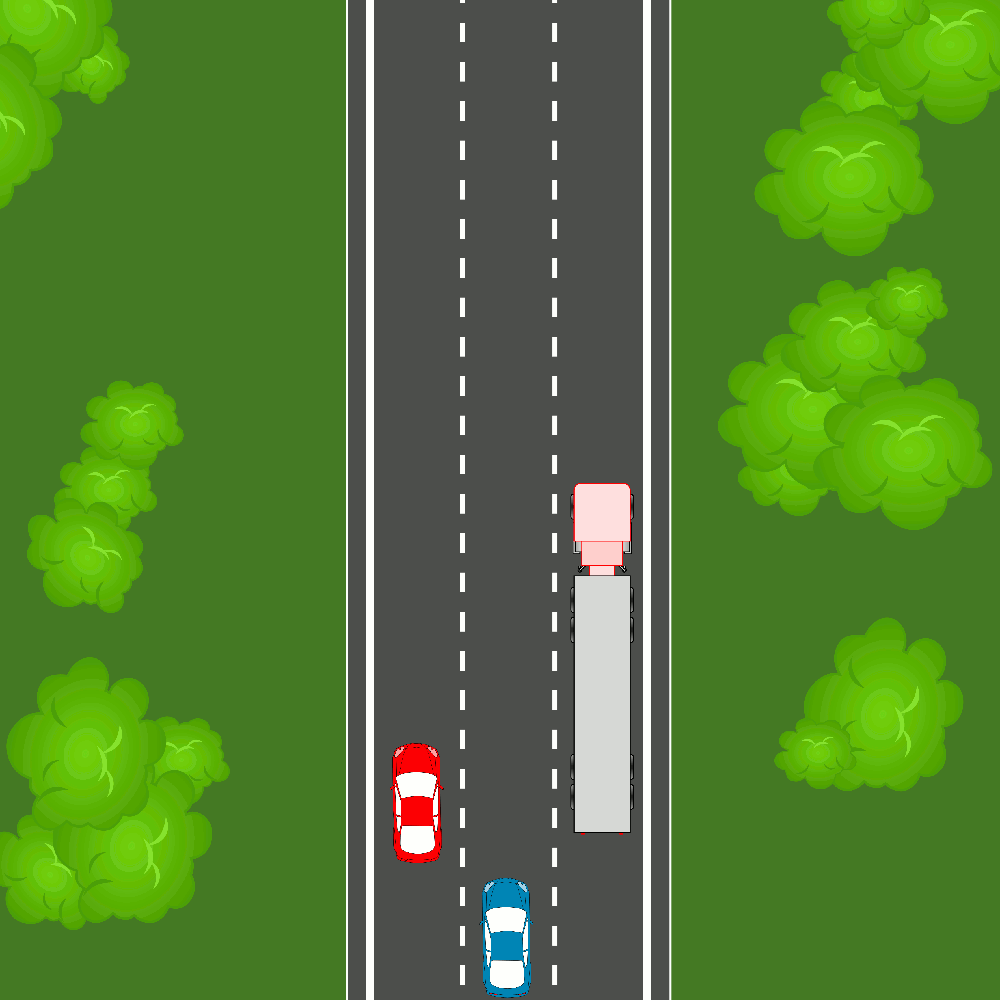
Rollover Truck Accident
Given their high center of gravity, commercial trucks can roll over when drivers lose control—often due to high speed, sharp turns, or improper loading. Rollover truck accidents can lead to catastrophic damage, especially if passenger vehicles are in the truck’s path.
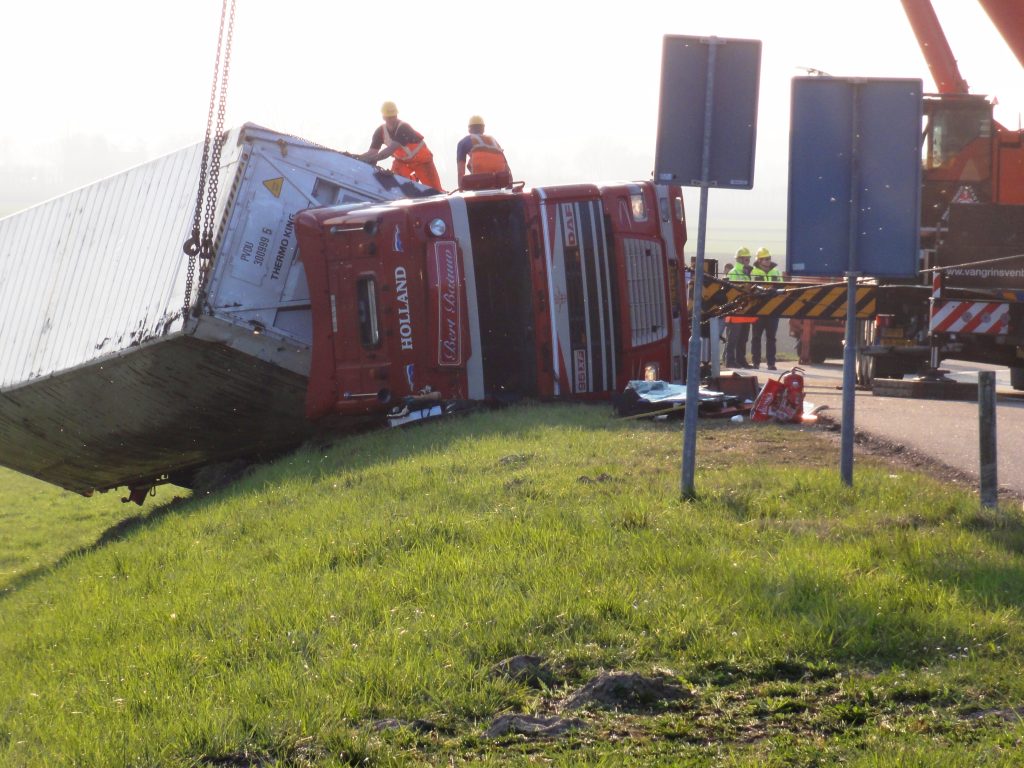
Underride Truck Accident
These truck accidents happen when a smaller vehicle slides underneath a semi-truck during a collision, often resulting in severe or fatal injuries due to the crushing impact on the smaller vehicle’s passenger compartment.
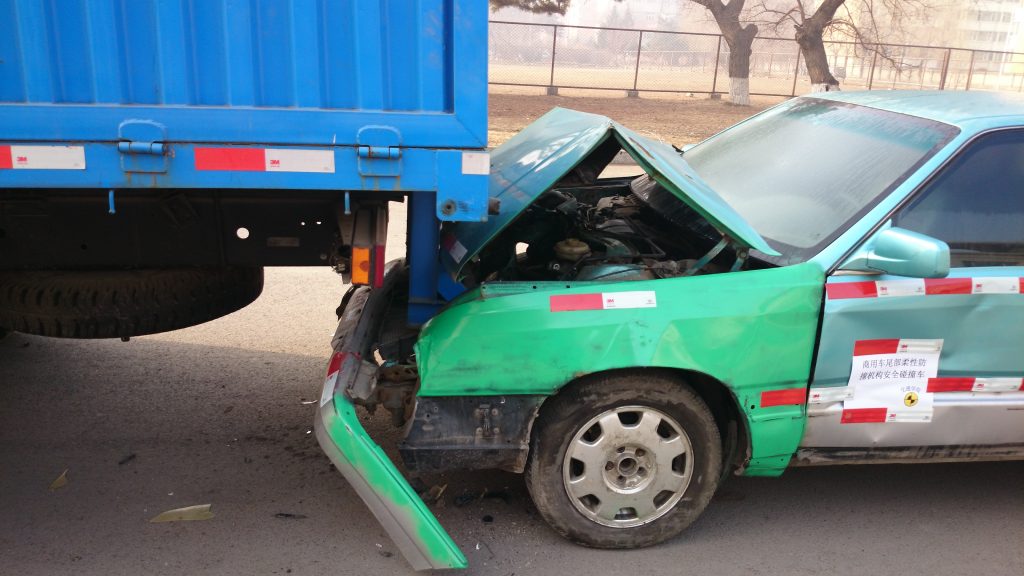
Override Truck Accident
An override truck accident is the opposite of an underride accident, occurring when truck drivers fail to stop and drive over a smaller passenger vehicle in front of it. Common causes include sudden stops by the smaller passenger vehicle or tailgating by the truck.
Rear-End Truck Accident
Due to their size and weight, semi-trucks require a longer distance to stop than regular vehicles. If a truck driver fails to maintain a safe distance or doesn’t react quickly enough, they can rear-end the car in front of them, leading to devastating damage like severe whiplash, spinal cord injuries, and traumatic brain injuries for those in the smaller, impacted vehicle.
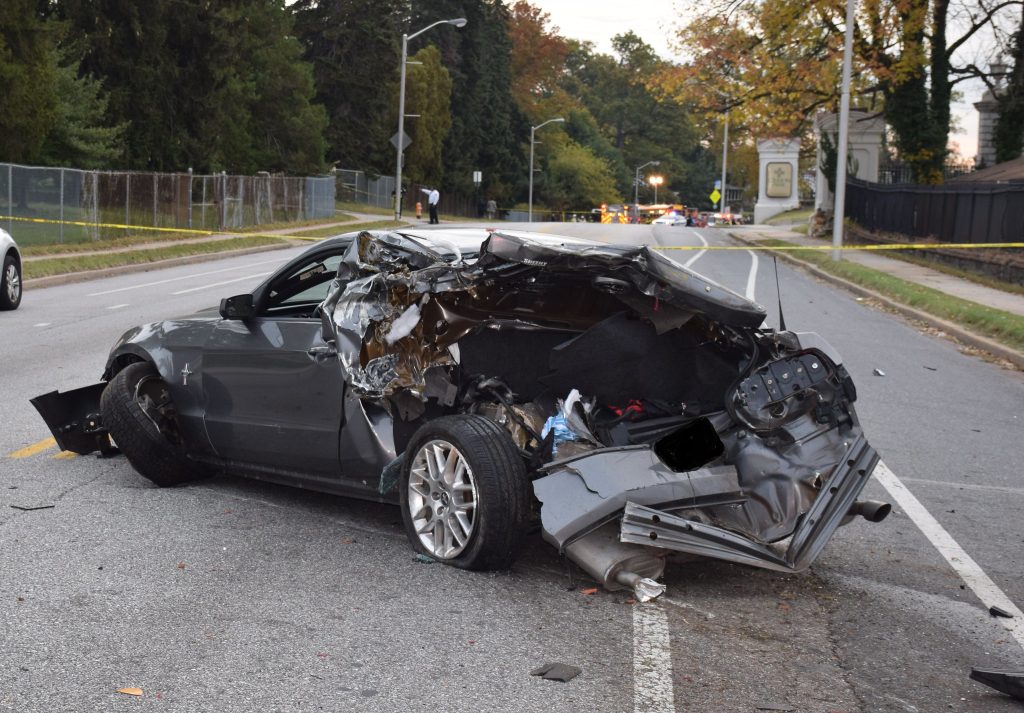
Blind Spot Truck Accident
Semi-trucks have large blind spots, or “no-zones,” where other vehicles are invisible to the truck driver. Accidents often occur when large trucks change lanes or turn without seeing smaller cars in these areas, causing severe side-impact or “T-bone” injuries.
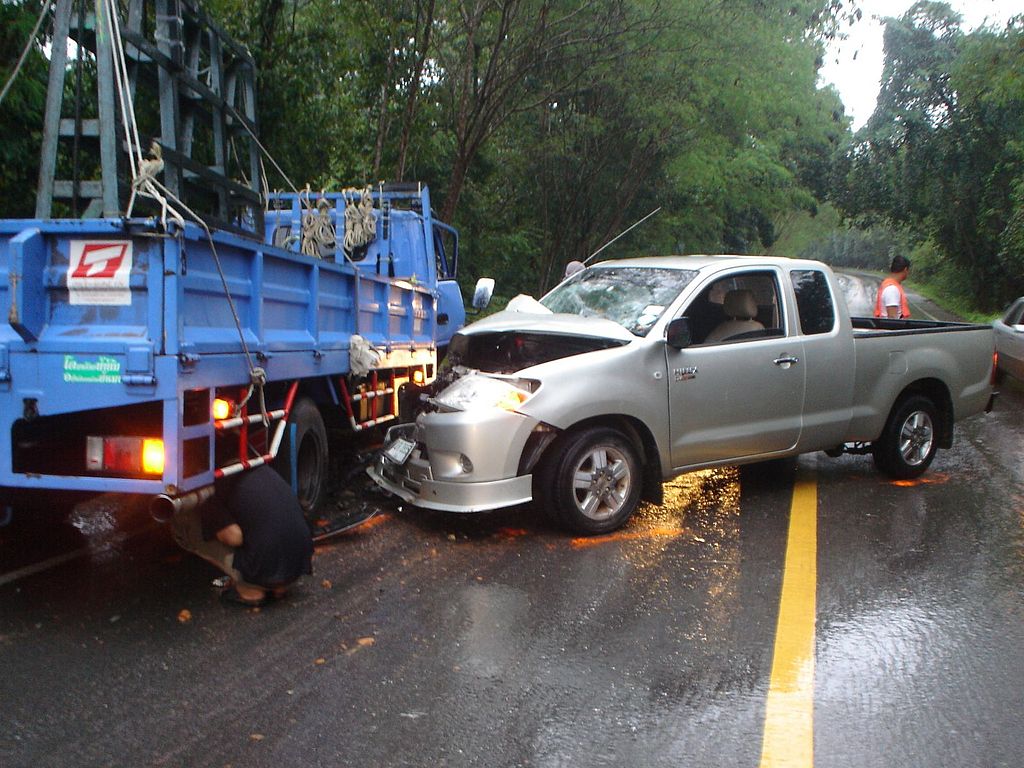
Lost Load Truck Accident
When a truck’s cargo is improperly secured, it can fall onto the roadway, creating hazards that lead to multi-vehicle accidents. These can cause extensive property damage and severe injury from collisions, vehicle rollovers, or puncture wounds from debris flying through windows.
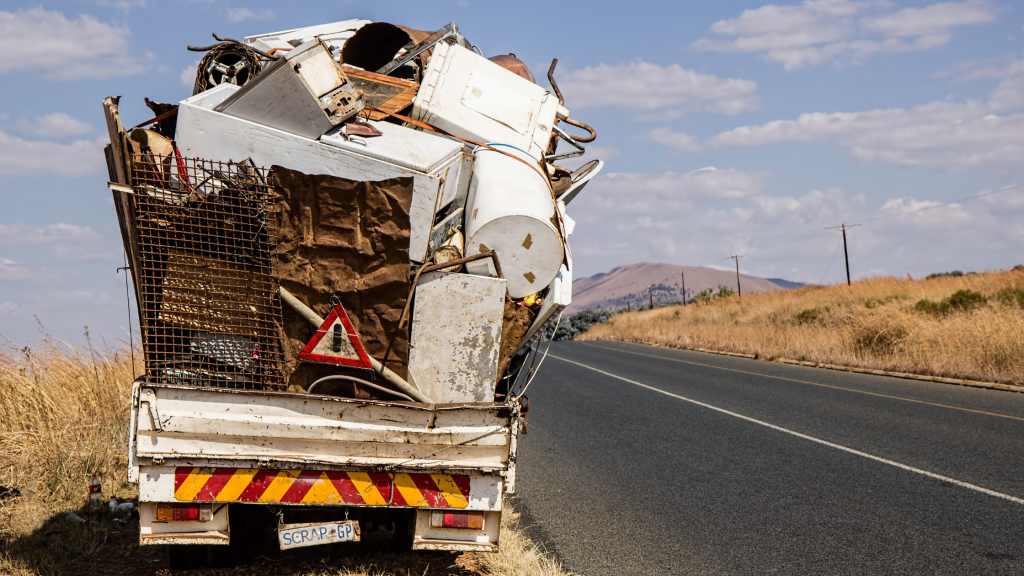
Understanding the type of truck accident you were involved in can help identify the potential causes and distribution of liability, contributing to building a robust legal case following such incidents.
The Immediate Aftermath of Trucking Accidents
If you’re involved in a truck crash, there are some crucial steps you need to take in the immediate aftermath to ensure your safety and that you receive appropriate damages.
- Immediately after a commercial truck accident, move yourself and your vehicle a safe distance from the accident scene to prevent further injuries, if possible. It’s dangerous to stay in the middle of the road or the path of oncoming traffic.
- Call 911 so that they can dispatch law enforcement and emergency medical services. They’ll ensure the safety and well-being of all involved parties, secure the scene to prevent further accidents, and document the incident in a police report. This report can later play a significant role in establishing fault and demonstrating the accident’s severity.
- Regardless of whether you think you have serious injuries, you should seek immediate medical attention following a semi-truck accident. Not all injuries are immediately apparent. Some, such as traumatic brain injuries or internal bleeding, can take hours, days, or weeks to present symptoms. By seeking medical attention immediately, you ensure that any hidden injuries are identified and treated promptly.
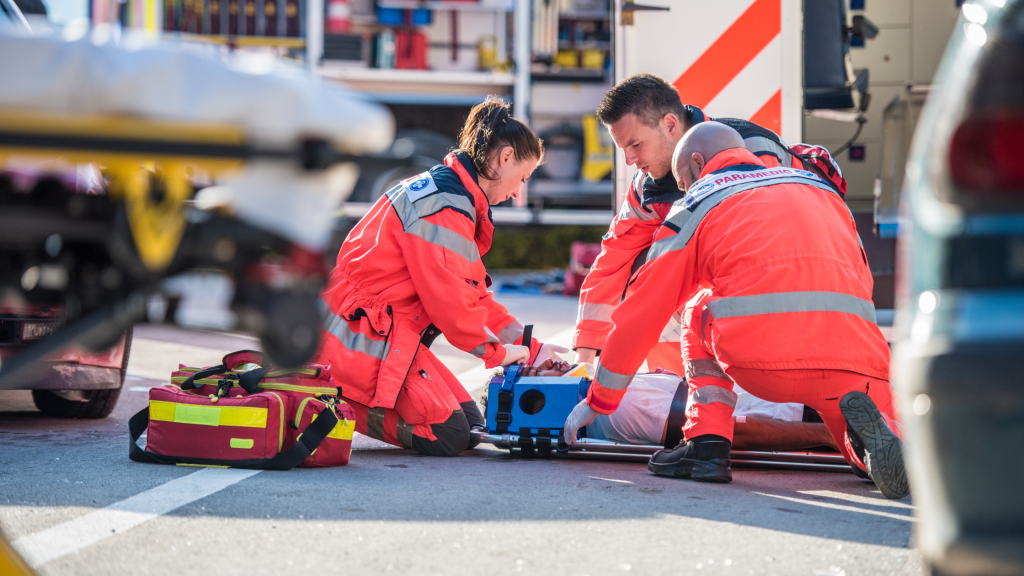
Even if you don’t think that you are injured, it’s better to be safe than sorry. - Furthermore, medical records created in the aftermath of an accident can serve as valuable evidence. They demonstrate the severity of your injuries and their direct link to the car accident, which can impact your compensation in a personal injury claim.
- Gather as much information about the accident scene if you’re physically able. This might include taking photos or videos of the accident scene, your injuries, vehicle damage, road conditions, and any visible skid marks or debris.
- Get the truck driver’s name, contact information, driver’s license number, insurance information, and the truck’s USDOT number. Also, gather contact information from any witnesses.
- Report the truck accident to your insurance company. Most insurance policies require prompt reporting of accidents, and failure to do so might compromise your coverage. When providing details, stick to the facts and avoid admitting fault or speculating about what happened. Speaking with a truck accident lawyer before giving a detailed statement to the insurance company is often beneficial, especially when significant injuries or damages are involved.
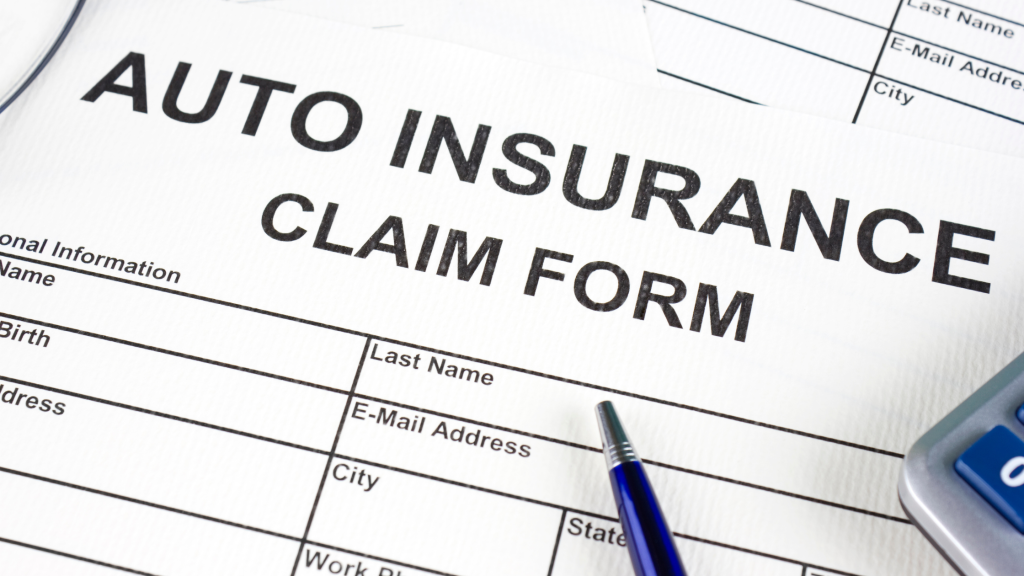
Contact your insurance company as soon as possible to start the claim process. - Start a file for any documents related to the accident, including medical bills and records, expenses related to the accident, official reports, and insurance claims.
- Find a truck accident attorney before you accept any settlements proposed by trucking companies or their insurance company. Accident attorneys will protect your rights and guide you through the legal process to ensure you receive fair compensation for your damages.
How Are Liable Parties Established in a Truck Accident Claim?
Truck accidents can involve several liable parties, unlike most car accident claims, where the only parties involved are you, the other driver, and your insurance companies.

The Truck Driver
Like any vehicle accident, the truck driver may be held responsible if their negligence or recklessness caused it. Negligence might include speeding, ignoring traffic rules, driving under the influence, or driving while fatigued.
The Trucking Company
Under the “Respondeat Superior” doctrine, an employer can be held liable for its employee’s actions performed within the scope of their employment. If a trucking company encourages reckless driving to meet deadlines, fails to maintain its fleet, or does not adequately train its drivers, it may be held responsible for accidents.
Truck Manufacturers or Mechanics
If a defect in the truck or its components contributed to the accident, the manufacturer of the truck or those specific parts could be held accountable. Additionally, mechanics who worked on the commercial vehicle but failed to identify or adequately repair these defects could also be liable.
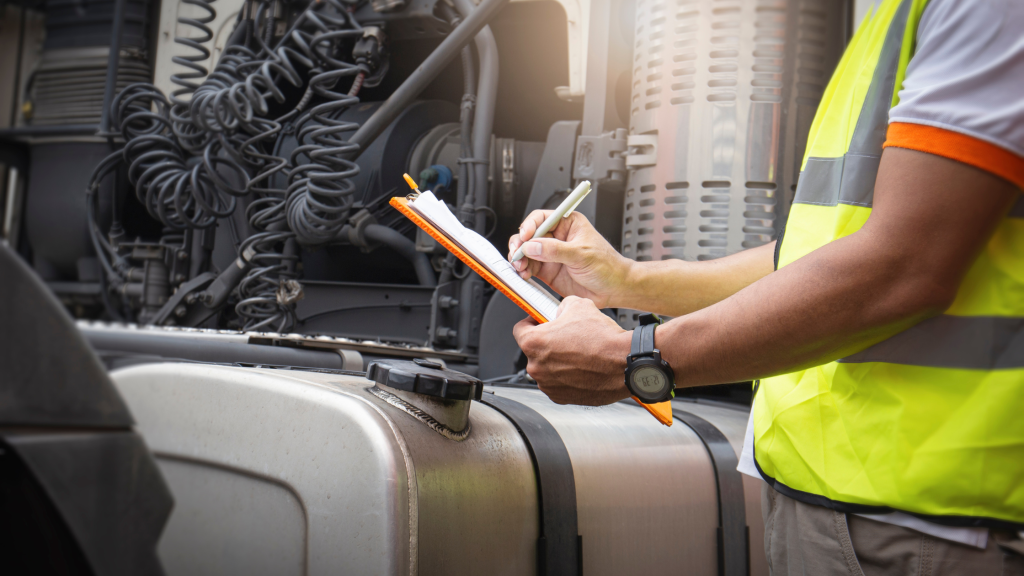
Cargo Loaders or Shippers
Improperly loaded or secured cargo can cause or contribute to truck accidents. In such cases, the company responsible for loading the truck or the shipper could be liable.
How Is Liability Determined in Semi-Truck Accidents?
To apportion liability after a commercial truck accident, insurance companies and truck accident attorneys undertake a detailed and comprehensive analysis of many different sources of information. A personal injury attorney can piece together the circumstances that led to the truck accident claim and determine which party, or parties, bear responsibility for the resulting damages.
Evidence at the Scene
Physical evidence at the scene gives information about the events leading up to and during the accident.
A few notable indicators include:
- Skid marks, which might indicate sudden braking or high speed.
- The presence and distribution of vehicle debris and the damage to the surrounding area, like guardrails or roadside signage.
- The final resting positions of the vehicles can help reconstruct the accident to understand the sequence of events.
Vehicle Damage
The extent and type of damage sustained by the vehicles involved in the accident can offer clues about the force and direction of the impact.
For instance, damage to the front of a truck might suggest that it rear-ended another vehicle, while damage on the side could imply a side-swipe or T-bone collision.
A detailed inspection of the damage by an expert can often recreate the accident’s dynamics and potentially indicate the party at fault.
Police Report
Law enforcement officers called to the scene of an accident document their observations, findings, and any law violations in a police report. This report typically includes the officer’s opinion about the accident’s cause and may identify the party they believe to be at fault.
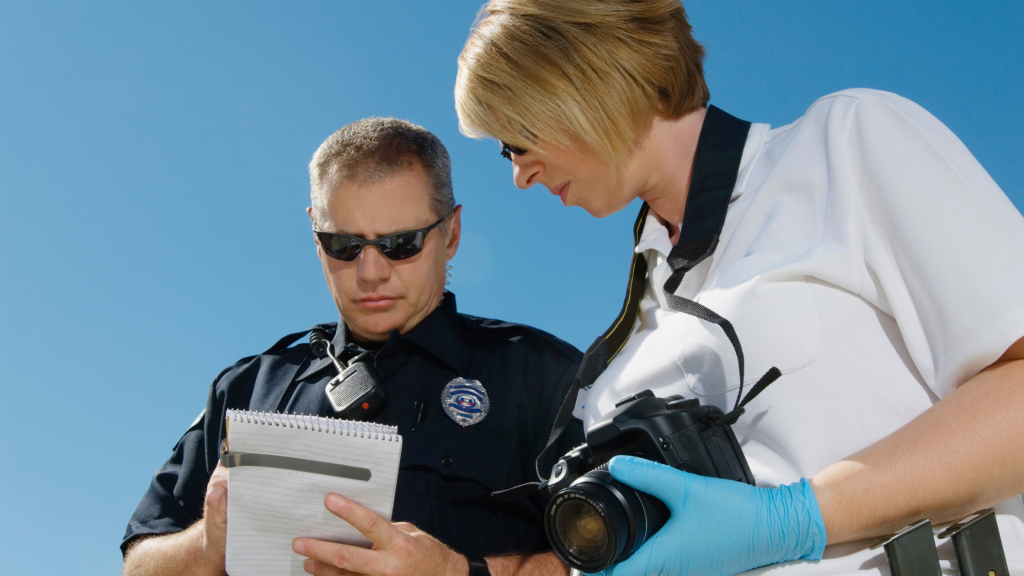
Witness Testimony
Eyewitness accounts from other drivers or pedestrians can provide an unbiased third-party perspective on the accident, which is especially valuable when the parties involved give conflicting reports. An experienced attorney can help identify and interview these witnesses to secure their testimony for your claim.
Truck’s Black Box Data
Modern commercial trucks often come equipped with an event data recorder (EDR), colloquially known as a “black box.”
This device records various operational data, including, but not limited to:
- Speed of the truck at the time of the crash
- Whether or not truck drivers are wearing their seatbelt
- Tire pressure
- Airbag status
- Steering wheel motion
- GPS location
- The number of hours truck drivers drove vs. rested.
- Acceleration and deceleration
These EDRs are invaluable in a trucking accident case because they give insights into a truck’s movements in the moments leading up to the accident and help establish if the driver was speeding, braking suddenly, or engaging in other reckless behaviors.
Violation of Trucking Regulations
The Federal Motor Carrier Safety Administration (FMCSA) sets numerous regulations for the trucking industry, which apply to all commercial vehicles that weigh 10,0001 pounds, transport hazardous materials in significant quantities, and/or are passenger vehicles for large groups, such as city buses, school buses, etc.
Since the FMCSA’s establishment on January 1, 2000, its standards have grown to encompass:
- Hours of Service (HOS) to eliminate semi-truck accidents caused by fatigue
- Compliance, Safety, and Accountability, a program that “grades” both the driver and trucking companies on unsafe driving, crash involvement, HOS compliance, vehicle maintenance, controlled substance abuse, hazardous materials compliance, and driver fitness
- Pre-employment checks
- Drug and alcohol testing
- Vehicle inspections
- Hazardous materials
- Cargo securement
- Record keeping
If a driver or trucking company violates these regulations, it can serve as strong evidence of negligence, contributing to liability in a truck accident case.
Damages in Commercial Vehicle Accidents
Damages in a semi-truck accident case refer to the financial compensation you can claim for your injuries and losses resulting from the accident. These damages can be categorized into two main types: economic and non-economic.
Economic Damages
Economic damages are tangible costs that can be calculated and proven with bills, receipts, or wage statements. They include medical expenses, lost wages, loss of earning capacity, and property damage.
Medical expenses can encompass many costs, from immediate emergency care and hospitalization to future medical expenses, physical therapy, medications, and necessary medical equipment.
Lost wages refer to the income you lost due to the accident, either due to immediate incapacity or ongoing recovery. If your injuries impact your ability to earn a similar income in the future, you can also claim lost earning capacity.
Property damage typically pertains to your vehicle but can include other personal property damaged in the accident.
Non-Economic Damages
Non-economic damages, on the other hand, compensate for intangible losses that do not have a set monetary value.
Pain and suffering can encompass physical and mental pain resulting from the accident and injuries. Emotional distress refers to psychological impacts like anxiety, depression, or post-traumatic stress disorder. Loss of enjoyment of life pertains to a decreased ability to enjoy the day-to-day activities and experiences you valued before the accident.
While less common, loss of consortium applies when injuries adversely affect the relationship with your spouse or children. It compensates for the loss of love, companionship, comfort, care, assistance, protection, affection, society, and moral support. Loss of consortium is most often claimed in cases involving fatalities or injuries of a very serious or prolonged nature.
Non-economic damages can significantly vary from case to case and are primarily determined by the specific circumstances of the accident, the severity of the injuries, and their impact on your life or the lives of your loved ones.
The Role of Truck Accident Lawyers in Maximizing Compensation After a Commercial Truck Accident
When the dust settles after a trucking accident, victims often find themselves grappling with not just physical pain but also the financial and emotional fallout of the incident.
Amidst these challenges, truck accident lawyers champion victims’ rights, working diligently to secure the highest possible compensation for the damages suffered.
Comprehensive Case Evaluation and Compensation Estimate
The first thing that truck accident lawyers do is conduct a comprehensive case evaluation. This initial assessment allows them to understand the nuances of the accident, identify liability, and estimate a preliminary compensation range.
Your attorney will assess your medical reports, evaluate your pain and suffering, consider the impact on your earning capacity, and even calculate future costs to establish a fair compensation amount.
In-Depth Investigation
Following the initial case evaluation, your personal injury attorney conducts an in-depth investigation of the accident.
This complex process includes gathering evidence, inspecting the accident scene, analyzing police reports, interviewing witnesses, and possibly reconstructing the accident with the help of experts to unearth critical information to strengthen your case. If necessary, they will also contact the truck companies to obtain black box information.
Negotiating with Insurance Companies
Insurance companies are often more concerned with protecting their bottom line than providing fair compensation. They may employ tactics to minimize your claim or deny it outright. An experienced truck accident lawyer can handle negotiations with insurance adjusters, ensuring your interests are protected and preventing lowball settlements.
Identifying Multiple Parties for Compensation
Unlike typical car accidents, semi-truck accidents often involve multiple parties, including the truck driver, trucking company, manufacturers, etc. A skilled semi-truck accident lawyer will assess all parties’ liability and potentially numerous insurance policies, maximizing the sources of compensation.
Litigation and Representation at Trial
If negotiations fail to yield a satisfactory settlement, your truck accident attorney will prepare your case for trial. They will advocate relentlessly for your right to fair compensation.
Final Thoughts: You Need a Truck Accident Lawyer Who Will Fight for You
The aftermath of a commercial vehicle accident extends beyond immediate physical injuries.
Victims of commercial vehicle accidents often suffer significant emotional trauma alongside physical injuries, manifesting as post-traumatic stress disorder (PTSD), anxiety, depression, and other psychological conditions.
Physically, severe injuries may require long-term medical treatment and rehabilitation, leading to permanent disability. These conditions can affect victims’ quality of life and their ability to return to work or partake in activities they once enjoyed.
The financial impact of these car accidents is also profound. Medical bills can pile up quickly, and the loss of income due to the inability to work exacerbates the financial strain. The burden can be overwhelming for victims and their families.
Legal action with the help of qualified semi-truck accident attorneys addresses these long-term impacts. By pursuing a personal injury lawsuit, victims can secure compensation for medical expenses, lost wages, pain and suffering, and other damages related to the accident. This financial relief can be instrumental in supporting victims’ recovery and easing the financial burden.
Proper legal representation can make a significant difference in securing fair compensation and helping truck accident victims navigate the road to recovery.
While most personal injury cases eventually settle, retaining an attorney willing and capable of trying your case before a jury is essential. At Meuser, Yackley & Rowland, P.A., we pride ourselves on our ability to obtain fair settlements and successfully try a personal injury case through to its conclusion when necessary.
That’s why we encourage you to schedule a free consultation. Since 1990, we have represented thousands of injured people, resulting in substantial awards and settlements to our clients.
Frequently Asked Questions
What should I do immediately after a commercial truck accident?
You should document the scene after ensuring your safety and seeking immediate medical attention. Gather information from the other parties involved, and take pictures of the scene, the vehicles, and any visible injuries. Report the accident to the police and your insurance company. Contacting trusted truck accident lawyers as soon as possible is also advisable.
How long do I have to file a lawsuit after a commercial truck collision?
The statute of limitations for personal injury lawsuits in Minnesota is six years after a commercial truck accident date. However, you should initiate the process immediately to ensure evidence is preserved, and witnesses’ memories are fresh.
How is fault determined in commercial truck accident lawsuits?
Determining fault involves analyzing the accident’s circumstances, including driver behavior, vehicle condition, compliance with regulations, and more. Police reports, eyewitness testimonies, expert opinions, and accident reconstruction can also play a role in determining fault in a truck accident.
Who can be held liable in tractor-trailer accidents?
Under truck accident law, multiple parties can be held liable, including the truck driver, the trucking company, the vehicle’s owner, the loader of the truck’s cargo, or the manufacturer of a faulty vehicle part. The specifics depend on the circumstances of the accident.
Can an injured truck driver bring a claim for workers’ compensation benefits if they are injured in an accident, regardless of whether they are at fault?
Yes, absolutely. If a truck driver is injured in an accident while performing job-related duties, they may be eligible for workers’ compensation benefits, even if they were at fault for the accident. Workers’ compensation is a no-fault system designed to provide benefits for medical expenses, rehabilitation, and a portion of lost wages if an employee is injured on the job. This means that the question of fault generally doesn’t impact the ability to claim these benefits.
How much compensation can I expect from a truck accident lawsuit?
The compensation varies based on factors such as the severity of injuries, the extent of economic losses, the degree of fault, and the impact on your quality of life. It can cover medical expenses, lost wages, future earnings, pain and suffering, and more.
Can I still file a lawsuit if I was partially at fault for the accident?
Minnesota follows a modified comparative fault rule, which means you can still recover some damages if you are partially at fault, so long as your percentage of the responsibility falls below 50%.
What if the truck driver was an independent contractor?
Even if the truck driver is an independent contractor, the trucking company may still be held liable under certain circumstances, such as if they were negligent in hiring or supervising the driver.








